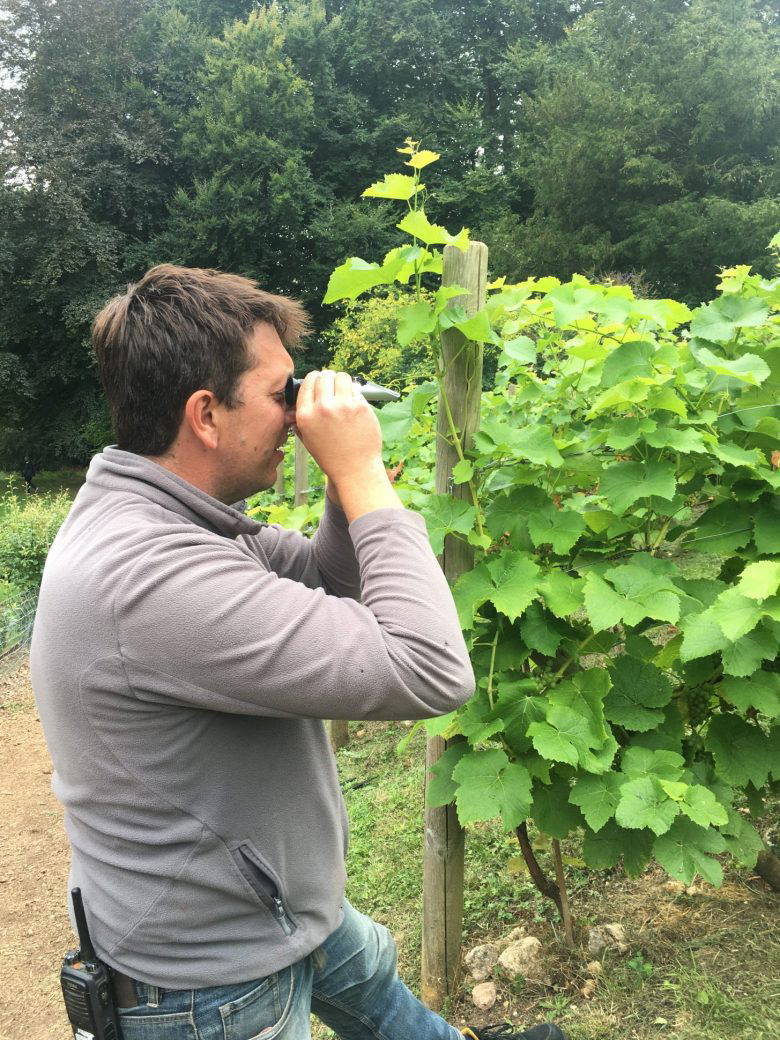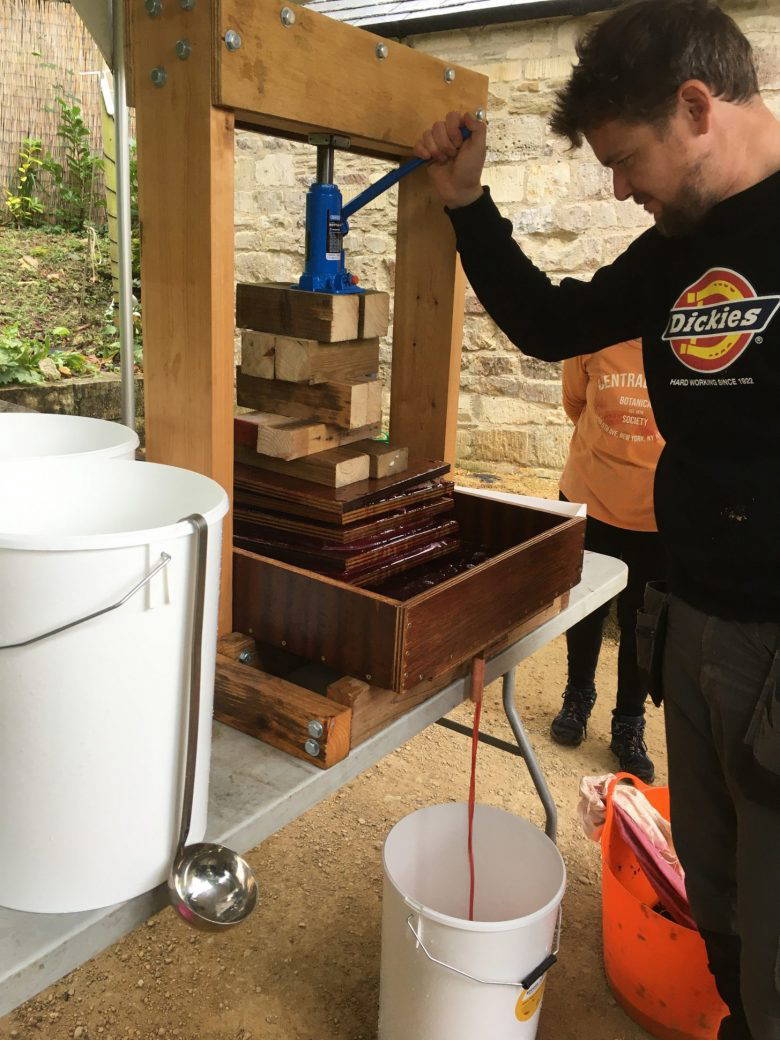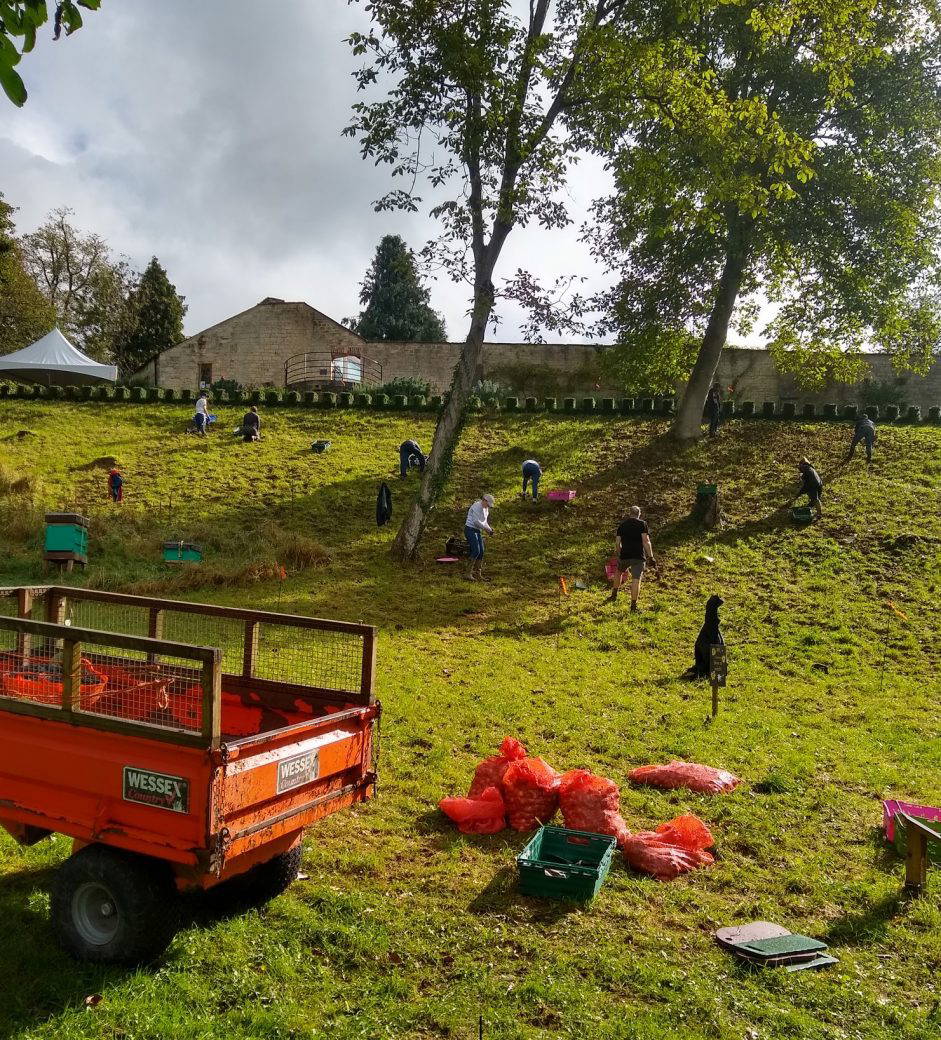September arrived and with it came some beautifully foggy mornings where the garden slowly revealed itself from the haze as the mornings warmed. So far, these mornings have turned into beautiful, bright and sunny days. The seasons are definitely changing but that’s not necessarily a sad thing. It’s not over yet, in fact the Helianthus in the Exedra has hit full bloom and the bees are absolutely reaping the benefits.
With the beginning of September came the testing of the grapes. Roger, our head gardener did some slightly variable calculations to try and foresee what sort of tonnage we could expect from this year’s harvest of the vineyard. Unfortunately, we fell short of our goal of 1 tonne to enable our grapes to be sent to a local vineyard for pressing so it was decided that we’d just have a go ourselves! We purchased a refractometer: a handy little device that measures the sugar level in fruit, charting it on what is called the brix scale. Here’s a photo of Roger testing the juice in our grapes to find out whether or not they were ready for harvesting.


When measuring in early September our white Solaris grapes measured 15 brix and our red Regent grapes measured 11 brix which were just a bit off our targets for making a rose. Unfortunately, before we had a chance to measure again the white grapes obviously reached the perfect sugar level and deliciousness, and were skilfully stripped from the vines by the birds in what seemed like the blink of an eye. We netted the red grapes to try and prevent the birds getting their beaks on these as well, which sort of worked and within a week or so we were picking and pressing our red grapes!
As well as wine making we’ve also harvested our hops for a second year running. As I type they are being carefully brewed into a new batch of our Red House Amber Ale. They will be delivered and ready for sale towards the end of October ready for Christmas shopping (is it too early for that ‘c’ word?) so keep an eye out for them. Last year’s batch was delicious and sold fast. Come January, and in readiness for our snowdrop season we hope to have a batch of a new pale ale for sale – name to be confirmed but we adore an application of alliteration!
During September we also started preparing our Kitchen Garden for winter by feeding the beds. We made our first trip of the year to the local Tibbiwell Alpaca’s to collect what we call black gold: their poo! Unlike pony poo it arrives directly from the alpacas behind ready for spreading – no rotting required!! We also collected pony poo this year from Tibbiwell. This was incredibly well rotted and whilst spreading it I felt that instead of feeding the beds, we were in fact worm re-homing. As well as the worms though we also uncovered a scarily skinny and anaemic looking frog. The poor thing looked as if he’d been stuck in a bag of poo for months, but he’d hung in there and when we found him we gave him a nice new home under the umbrella like stems of a Sedum next to the Plunge Pool. Hopefully he was able to put on some much-needed weight and live out a happy and fulfilling life at Rococo. As well as an assortment of animal droppings we have also opted for some green manure and a mulch of wood chipping to cover our beds and keep the weeds down over the winter.


We’ve had a fabulous season of supplying the kitchen with veg through July and August and we’re still at it in September and hope to continue until the end of the year. The soups continue but the salads are being replaced on the menu by vegetarian curries which also utilise the spoils of the Kitchen Garden.
This month has seen the planting of more daffodil bulbs. Over the last handful of years we have planted literally tens of thousands of daffodils through the Orchard and up through the Red House Wilderness. This year we’re working on the Wildflower Meadow and the bank up to the Garden viewpoint. 12,000 daffodil bulbs, comprising of Tamara, King Alfred and Ice Follies have been back-breakingly planted in the orchard area of the meadow with the help of a corporate volunteer group from Ecclesiastical as well as a further 3000 up the steep bank to the Bothy beds with even more help from corporate volunteers, this time from Nationwide. A massive thank you to them, we couldn’t have done it without you.
New Wildlife Section!!
Here at Rococo Garden we are constantly in awe of the array of wildlife our lovely Garden holds and so the team thought that we would add a monthly spotted wildlife section to the blog. Here goes:
Whilst harvesting the hops we stumbled upon these incredible cocoons with a bling golden design. After a quick search we believe they are the cocoons of the Comma butterfly which, it is noted, are particularly partial to hop plants – who knew!? In fact, the comma butterfly apparently suffered a severe decline in numbers during the mid 1800’s due to a reduction in hop farming.


We also found THE most exotic looking caterpillar to date. We identified him as the Pale Tussock Moth Caterpillar, although I disagree with the use of the word ‘pale’ in his name. He really was something to behold, with his startlingly yellow fluff and bright red rear tuft…!!
